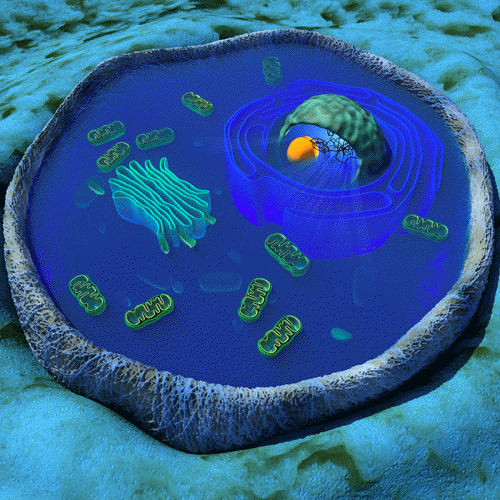 Cytoplasm is the fluid that fills a cell
The cytoplasm consists of all of the contents outside of the nucleus and enclosed within the cell
membrane of a cell. Cytoplasm helps materials move around the cell by moving and churning through a process called
cytoplasmic streaming. The cytoplasm is the site where most cellular activities are done.
Cytoplasm is the fluid that fills a cell
The cytoplasm consists of all of the contents outside of the nucleus and enclosed within the cell
membrane of a cell. Cytoplasm helps materials move around the cell by moving and churning through a process called
cytoplasmic streaming. The cytoplasm is the site where most cellular activities are done.
Cytoplasm is a gelatinous, semi–transparent fluid.
The inner granular mass of the cytoplasm is often called endoplasm, while the outer, clearer (glassy) part is called cell cortex or ectoplasm. Cytoplasm consists of an aqueous ground substance, the cytosol, containing a variety of cell organelles and other inclusions such as chemical substances that store nutrients (starch, glycogen, lipid, etc.), secretory products, insoluble waste and pigment granules.
The cytoplasm helps materials move around the cell by moving and churning through a process called cytoplasmic streaming. The cytoplasm is the site where most cellular activities are done. The cytoplasm holds and protects organelles such as the vacuole, mitochondria, the endoplasmic reticulum, the Golgi apparatus, lysosomes, peroxisomes, and in plant cells–chloroplasts. The functions for cell expansion, growth and replication are carried out in the cytoplasm of the cell.
Cytoplasm has three main functions, energy, storage and manufacturing. It contains other organelles, which store and produce energy. Synthesis of fatty acids, nucleotides and some amino acids also take place in the cytosol. The organelles are the metabolic machinery of the cell and are like little organs themselves.